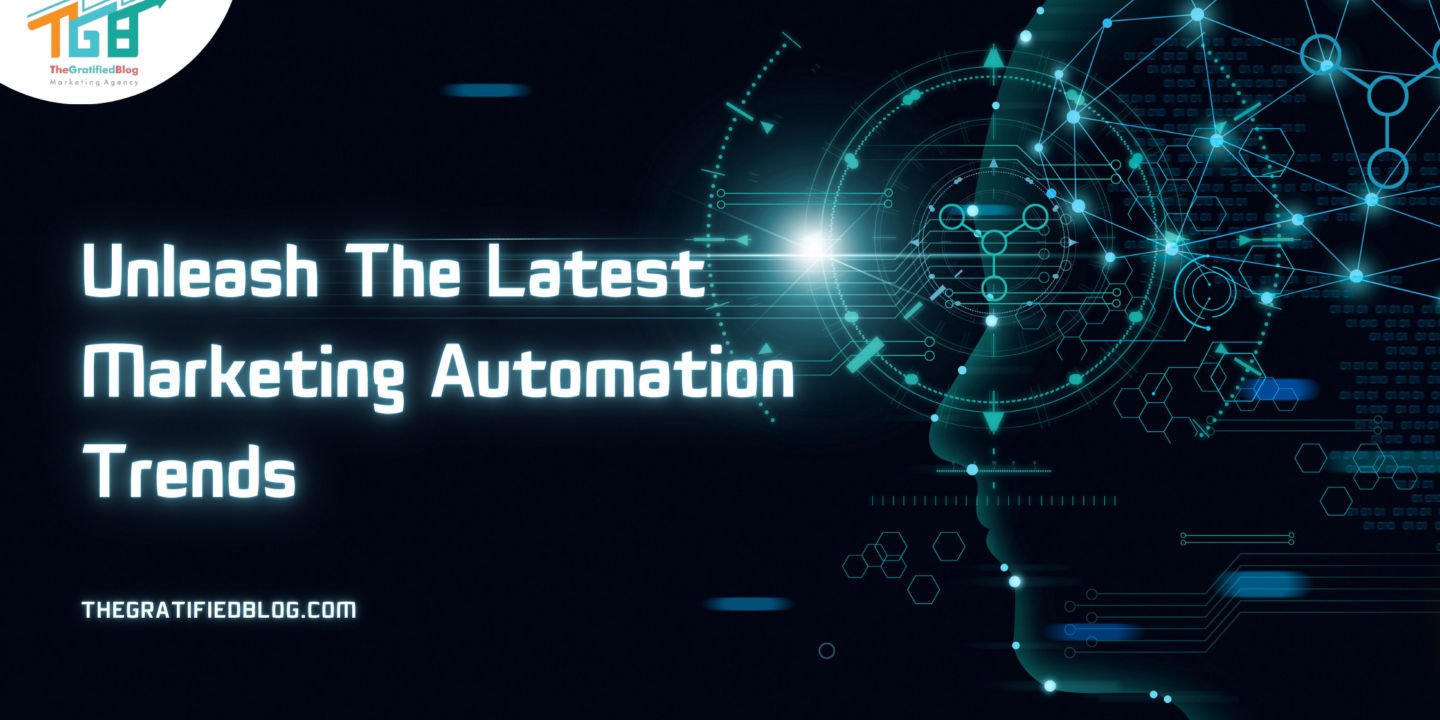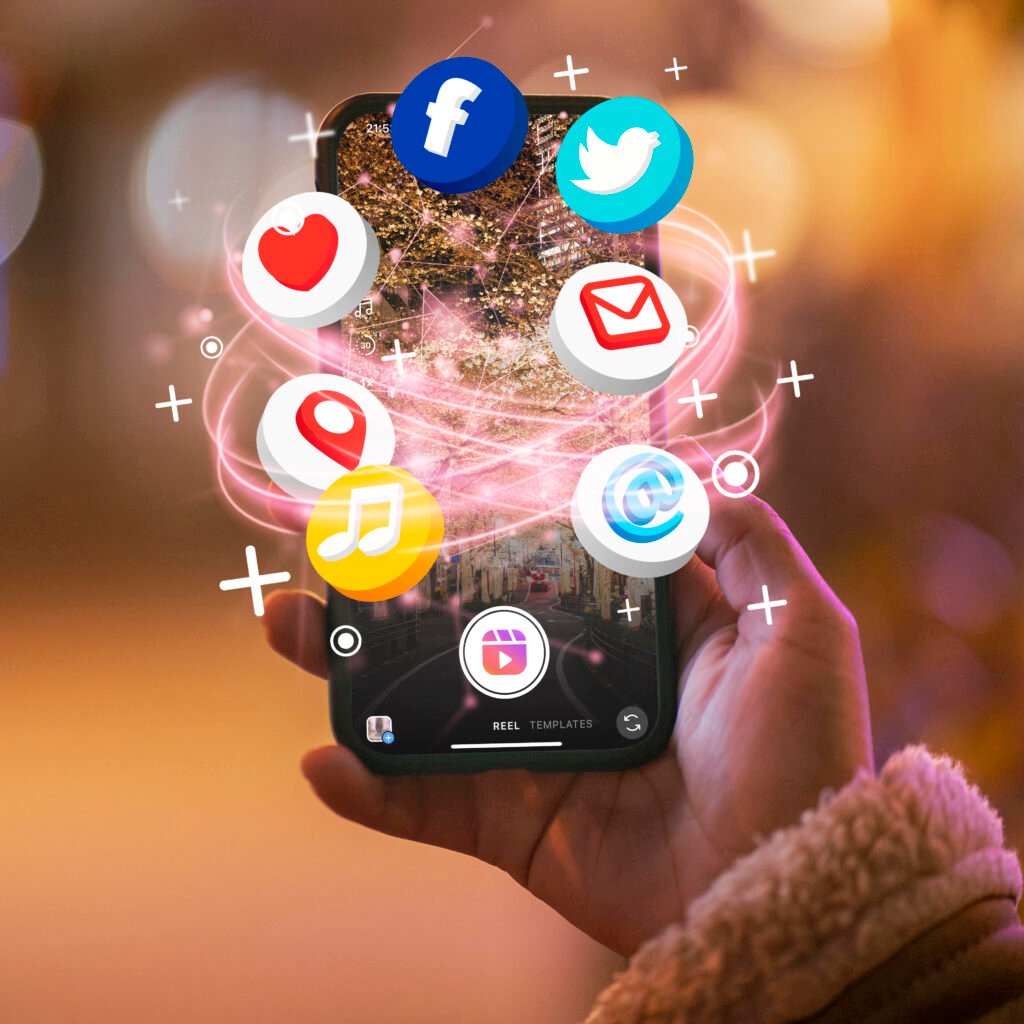
To maintain competitiveness in the dynamic digital marketing sphere, one must proactively understand marketing automation trends. These trends influence how businesses engage with customers and redefine the strategies that drive growth and engagement. From data-driven insights to AI-powered personalization, marketing automation is progressing quickly, bringing forth challenges and opportunities for marketers.
In this comprehensive guide, we delve into the heart of Marketing Automation Trends, exploring their significance, impact, and the key trends shaping the future of marketing automation strategies.
Whether you’re a seasoned marketer seeking to optimize your campaigns or a business owner striving to leverage cutting-edge technologies, this guide will provide valuable insights into trends reshaping the digital marketing landscape.
So, let’s get started:
What Are Marketing Automation Trends?
Marketing automation trends refer to the evolving digital marketing strategies, technologies, and practices that leverage automation tools to streamline and optimize marketing processes.
These trends encompass various advancements, including data-driven decision-making, AI-driven personalization, omnichannel marketing integration, and automation Tools for managing email marketing, social media, and customer interaction relationship management (CRM).
Marketing automation trends aim to enhance efficiency, improve targeting and personalization, and drive better results in lead generation, customer engagement, and overall ROI for businesses.
Importance Of Marketing Automation Trends
Efficiency And Time Savings
Marketing automation trends are crucial in improving efficiency and saving valuable time for marketing teams. By streamlining repetitive activities like email campaigns and social media posts, lead nurturing, and data analysis, marketers can focus more on strategic activities that require human creativity and decision-making.
This streamlines workflows reduces manual errors, and ensures consistent and timely execution of marketing activities across multiple channels. Consequently, businesses can improve their operational efficiency., allocate resources effectively, and achieve better productivity and campaign effectiveness results.
Enhanced Customer Experience
An essential advantage of marketing automation is that trends are their ability to enhance the overall customer experience. Businesses can create meaningful customer interactions by leveraging automation tools for personalized messaging, targeted content delivery, and behavior-based segmentation.
This increases customer satisfaction, loyalty, and engagement as customers receive relevant and timely communications tailored to their preferences and needs. Moreover, automation allows for continuous monitoring and optimization of customer journeys, ensuring a seamless and consistent experience across all touchpoints, from initial engagement to post-purchase support.
Improved Marketing ROI
Marketing automation trends significantly improve marketing return on investment (ROI) by optimizing campaign performance, increasing lead conversion rates, and maximizing customer lifetime value.
Automation tools empower marketers to monitor and analyze key metrics in real time and identify areas of leads to targeted and effective marketing campaigns. Marketers can optimize their strategies by making data-driven decisions, reducing acquisition costs, generating higher revenue, and positively impacting the bottom line.
Additionally, automation allows for better lead nurturing and lead scoring, ensuring that sales teams receive qualified leads that are more likely to convert, further enhancing ROI and overall business profitability.
Now that you have grasped the importance of automation trends in marketing efforts let’s delve into the primary trends in marketing automation.
Key Marketing Automation Trends
Full-Funnel Omnichannel Marketing

Full-funnel omnichannel marketing is a strategic approach that aims to engage customers at every stage of their buying journey across multiple channels and touchpoints. Unlike traditional marketing strategies focusing on individual channels or stages of the sales funnel, full-funnel omnichannel marketing takes a holistic view, ensuring consistent messaging and experiences throughout the entire customer lifecycle.
Purpose and Benefits:
- Enhanced Customer Journey: Full-funnel omnichannel marketing integrates Marketing endeavors across different channels, such as social media and email, websites, and offline interactions, to ensure a seamless and cohesive customer journey. This regularity fosters trust and loyalty among customers.
- Improved Targeting and Personalization: By leveraging data and analytics across channels, marketers can create highly targeted and personalized campaigns that resonate with individual customer preferences and behaviors. This results in increased engagement and conversion rates.
- Optimized Marketing Spend: With a full-funnel approach, marketers can allocate budgets more effectively by focusing resources on channels and strategies that generate optimal outcomes ROI at each funnel stage. This leads to improved allocation of marketing budgets and improved cost efficiency.
- Maximized Customer Lifetime Value: Full-funnel omnichannel marketing maximizes customer lifetime value by nurturing customer relationships throughout their journey, from awareness to advocacy. This includes repeat purchases, upselling opportunities, and positive word-of-mouth referrals, all essential for long-term business success.
Automated Social Media Marketing

Automated social media marketing means using software tools and technologies to simplify and automate different facets of social media management, such as content scheduling, posting, monitoring, engagement, and analytics. This approach allows marketers to handle and manage their social media presence efficiently, engage with their audience, and assess performance metrics, saving time and resources while maximizing impact.
Purpose and Benefits:
- Efficiency and Time Savings: Automated social media marketing tools automate repetitive tasks like content scheduling, posting, and monitoring, freeing up valuable time for marketers to focus on strategy, creativity, and engagement with their audience.
- Consistent Brand Presence: Automation ensures a consistent brand voice, messaging, and posting schedule across multiple social media platforms, maintaining brand integrity and reinforcing brand identity in the eyes of the audience.
- Improved Engagement and Interaction: Automation enables timely responses to comments, messages, and mentions, fostering meaningful interactions with followers and enhancing overall engagement levels on social media.
- Data-driven decision-making: Automated tools provide valuable insights and analytics on social media performance, audience demographics, content engagement, and ROI, empowering marketers to base decisions on data and fine-tune their social media strategies for optimal results.
Generative AI

Generative AI, also known as creative AI or deep learning, refers to artificial intelligence systems that create fresh content using patterns and data inputs such as text, images, videos, or music. Unlike traditional AI systems that rely on predefined rules and instructions, generative AI can create original and unique outputs, making it a powerful tool for creativity and innovation across various industries.
Purpose and Benefits:
- Content Creation: Generative AI can create high-quality content at scale, including articles, blog posts, product descriptions, and social media posts, saving time and resources for content creators.
- Personalization: By analyzing user data and preferences, generative AI can generate personalized recommendations, messages, and experiences for individual users, enhancing customer engagement and satisfaction.
- Creative Design: Generative AI can generate visual designs, artwork, and graphics, helping designers and artists explore new ideas, styles, and concepts.
- Automation and Efficiency: By automating repetitive tasks like content generation, design prototyping, and data analysis, generative AI improves workflow efficiency, allowing teams to focus on higher-level strategic tasks and decision-making.
Predictive AI

Predictive AI uses artificial intelligence algorithms and machine learning methods to examine data patterns and predict future outcomes. This technology leverages historical data, real-time information, and predictive modeling to forecast trends, behaviors, and events, assisting businesses in making knowledgeable decisions and enhancing their strategic planning.
Purpose and Benefits:
- Forecasting Trends: Predictive AI can analyze past data and current trends to forecast future market conditions, customer preferences, and industry developments, enabling businesses to foresee shifts and maintain a competitive edge.
- Enhanced Decision Making: By providing accurate predictions and insights, predictive AI empowers decision-makers to make informed and data-driven decisions, reducing risks and optimizing resource allocation.
- Personalization: Predictive AI can analyze customer data to predict individual preferences, behaviors, and purchase intentions, allowing businesses to deliver personalized recommendations, offers, and experiences that resonate with their audience.
- Risk Management: Predictive AI can identify potential risks, anomalies, and outliers in data, enabling businesses to proactively mitigate risks, detect fraud, and ensure regulatory compliance, leading to improved security and operational efficiency.
How is generative AI different from Predictive AI?
Generative AI creates new content or outputs based on learned patterns and data, such as images, text, or music. Predictive AI, on the other hand, uses historical data and algorithms to forecast future outcomes or behaviors.
Personalized Content
Personalized content refers to creating and delivering tailored messaging, products, and experiences to individual users based on their preferences, behaviors, and demographics. This approach goes beyond generic mass communication to offer tailored and pertinent content that connects with each user personally, enhancing engagement and driving conversions.
Purpose and Benefits:
- Improved Engagement: Personalized content captures users’ attention by addressing their specific interests, needs, and pain points, leading to higher engagement levels, more extended website visits, and increased interaction with brand content.
- Enhanced Customer Experience: Personalization creates a more enjoyable and seamless user experience by delivering relevant, timely, and valuable content. This fosters a positive perception of the brand and builds customer loyalty.
- Increased Conversions: Personalized content has been shown to significantly increase conversion rates by presenting users with relevant offers, recommendations, and calls-to-action that align with their preferences and behaviors, leading to higher sales and revenue.
- Data-driven Optimization: Personalization relies on data analytics and user insights to understand customer behavior, preferences, and journey stages, allowing businesses to continuously optimize their content strategies, improve targeting accuracy, and deliver more personalized experiences over time.
Chatbots
Chatbots are software programs powered by artificial intelligence that mimic human behavior. They engage in conversations with users through text or voice interfaces, using natural language processing (NLP) and machine learning algorithms to understand user inquiries, provide information, answer questions, and perform tasks. Thus, they offer users a seamless and interactive experience interacting with businesses and websites.
Purpose and Benefits:
- 24/7 Customer Support: Chatbots can provide round-the-clock customer support, answering common questions, resolving issues, and guiding users through processes without human intervention, improving customer satisfaction and response times.
- Cost Efficiency: By automating routine tasks and managing routine inquiries, chatbots reduce the need for human agents and resources, resulting in cost savings for businesses while maintaining service quality.
- Scalability: Chatbots can handle multiple conversations simultaneously, scaling to accommodate growing user demand and traffic spikes without experiencing delays or performance issues, ensuring a smooth user experience during peak periods.
- Data Collection and Insights: Chatbots collect valuable user data and interaction insights, such as frequently asked questions, user preferences, and feedback. This enables businesses to analyze trends, identify opportunities for improvement, and personalize user experiences based on data-driven insights.
CRM Data Reporting
CRM data reporting refers to analyzing and interpreting data collected in a Customer Relationship Management (CRM) system to gain an understanding of customer behavior, preferences, and interactions with the business. It generates reports, dashboards, and visualizations that provide a comprehensive view of customer data, enabling enterprises to enhance decision-making and improve their overall CRM strategies.
Purpose and Benefits:
- Performance Monitoring: CRM data reporting allows businesses to monitor the performance of sales, marketing, and customer service initiatives by monitoring essential metrics like leads generated, conversions, customer satisfaction scores, and retention rates.
- Targeted Marketing: By analyzing CRM data, businesses can segment customers based on demographics, purchase history, and behavior, creating targeted and personalized marketing initiatives that appeal to particular customer groups.
- Customer Insights: CRM data reporting provides valuable insights into customer preferences, needs, and pain points, helping businesses understand their audience better and tailor products, services, and communications accordingly.
- Decision Making: With comprehensive data reports and analytics, decision-makers can make data-driven decisions regarding sales strategies, customer engagement tactics, product development, and resource allocation, leading to improved business outcomes and ROI.
FAQs
Q1. What are the most recent developments in marketing automation?
A. The latest trends in marketing automation include AI-driven personalization, full-funnel automation, omnichannel integration, predictive analytics for targeting, and automation of customer journeys for enhanced engagement and conversion.
Q2. In what ways can small businesses gain advantages from marketing automation?
A. Small businesses can benefit from marketing automation trends by saving time and resources through automated processes, improving targeting and personalization for better customer engagement, increasing lead nurturing and conversion efficiency, and gaining insights from data analytics for informed decision-making.
Q3. What are the challenges in implementing marketing automation trends?
A. Implementing marketing automation trends requires adequate data quality and integration, ensuring alignment with overall business goals and strategies, effectively managing complex automation workflows, and overcoming resistance to change and adoption within the organization.
Conclusion
Given your thorough understanding of marketing automation trends, why not implement these strategies in your marketing endeavors to experience their advantages directly? Seize the opportunity to enhance your marketing strategies with cutting-edge trends in marketing automation!
However, if you still have any questions related to the blog, feel free to leave them in the comment section below. We will be happy to answer you.
Thanks for reading 🙂








No Comments